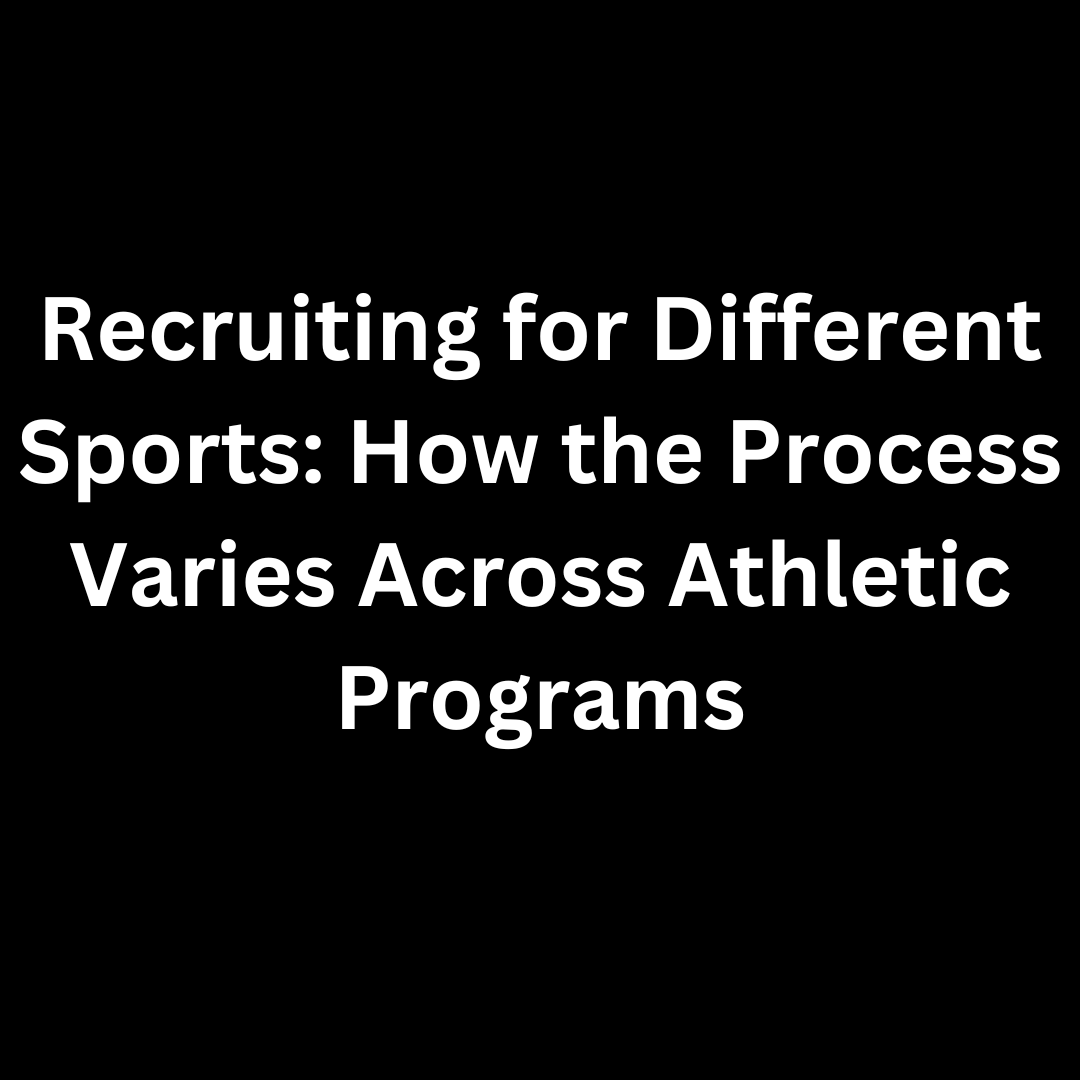The college recruiting process can be a complex and competitive journey, and it varies significantly depending on the sport. Each sport has its own set of rules, timelines, and strategies for recruitment, meaning that what works for a football player may not apply to a swimmer or a tennis player. In this article, we’ll break down how recruiting differs across various sports, giving athletes and their families a better understanding of what to expect and how to prepare.
1. Football: The High-Profile Process
Football is one of the most high-profile and widely followed sports in the college recruiting world, particularly for NCAA Division I programs. The recruitment process for football is often more intense and begins earlier than many other sports, especially for elite athletes.
Key Features of Football Recruiting:
- Early Offers: Top prospects in football often start receiving offers as early as their sophomore or junior years of high school. Coaches scout players through film, camps, and combines.
- National Signing Day: One of the most prominent events in football recruiting is National Signing Day, typically in February. This is when many athletes officially commit to college programs by signing their National Letter of Intent (NLI).
- Camps and Combines: Attending football camps and showcases, like the Nike Elite camps or regional combines, is crucial for getting noticed by top programs.
- Scholarship Limits: Division I FBS programs can offer up to 85 scholarships, while FCS programs offer up to 63 scholarships, often making the competition for full-ride scholarships highly intense.
Football recruiting is highly organized and competitive, and athletes need to take advantage of every opportunity to showcase their talents to college coaches.
2. Basketball: High Exposure and National Scouting
Basketball recruiting is another high-exposure sport, especially for men’s basketball, where scouting starts early and is often national in scope. The process is similar for women’s basketball, but there are key differences in the way recruitment plays out for each gender.
Key Features of Basketball Recruiting:
- AAU and Travel Teams: Unlike football, much of basketball recruiting happens through AAU and travel ball teams. College coaches often scout players during major AAU tournaments in the offseason, which allows players to gain exposure to national programs.
- Early Recruitment: Like football, top basketball prospects often commit to programs early in their high school careers. It’s not uncommon for elite players to receive offers as freshmen or sophomores.
- NCAA Evaluation Periods: The NCAA sets specific evaluation periods when coaches can watch athletes compete in person. For basketball, these periods are crucial, as they coincide with high-profile tournaments.
- Scholarship Limits: NCAA Division I men’s basketball teams are limited to 13 scholarships, while women’s teams have 15, meaning coaches must be strategic about how they distribute full and partial scholarships.
For basketball, the key is to get involved in elite travel teams and high-profile tournaments to maximize visibility to college coaches.
3. Baseball: Showcases and Summer Leagues
Baseball recruiting operates on a different timeline than sports like football and basketball, with the recruiting process typically extending further into an athlete’s high school career.
Key Features of Baseball Recruiting:
- Summer Showcases: College baseball coaches heavily recruit during summer showcase events and travel ball leagues, such as Perfect Game and USA Baseball events. These showcases provide a platform for athletes to compete against top talent and be evaluated by college scouts.
- Late Recruitment: Baseball recruiting tends to start later than football and basketball. While some top prospects may commit early, most players are recruited during their junior and senior years of high school.
- Junior Colleges (JUCO): Many baseball players opt to attend junior colleges for a year or two before transferring to four-year programs. JUCOs offer a great opportunity for players to develop their skills and improve their recruitment prospects.
- Scholarship Limits: Baseball has fewer full scholarships than other sports. Division I baseball programs are allowed 11.7 scholarships, which are often divided among the roster, meaning partial scholarships are common.
For baseball athletes, summer showcases and travel teams are essential for getting noticed, and many players may need to be flexible in terms of scholarship offers and school choices.
4. Soccer: International Influence and Club Teams
Soccer recruitment in the U.S. is influenced heavily by club teams and international talent. College coaches often rely on club-level soccer for scouting, as high school soccer isn’t as prominent in the recruiting process as it is for other sports.
Key Features of Soccer Recruiting:
- Club Soccer Dominance: College coaches primarily scout soccer players through club teams rather than high school teams. Tournaments such as the ECNL, US Soccer Development Academy, and state showcases play a crucial role in getting noticed.
- International Recruitment: College soccer programs, especially at the Division I level, often recruit internationally. This means U.S. athletes face competition not only from domestic players but also from talented players abroad.
- Early Recruitment: Top soccer players often receive scholarship offers during their junior year of high school, and early verbal commitments are common.
- Scholarship Limits: Division I men’s soccer programs are limited to 9.9 scholarships, while women’s programs have 14. These are typically divided among several players, so full scholarships are rare.
Soccer players should focus on excelling in club soccer and participating in national showcases to increase their chances of being recruited by top programs.
5. Track and Field: Performance-Based Recruitment
Recruiting for track and field differs from team sports in that it is primarily performance-based. Coaches focus heavily on an athlete’s times, distances, and rankings when making recruiting decisions.
Key Features of Track and Field Recruiting:
- Personal Bests Matter: Unlike other sports that rely on film and game performance, track and field recruitment is driven by measurable results. Athletes need to consistently perform well in meets and improve their personal bests to catch the attention of college coaches.
- Late Recruitment: Track and field recruitment often happens later in high school, as coaches want to see an athlete’s progress over time. Junior and senior years are typically the most important for getting recruited.
- Scholarship Limits: NCAA Division I men’s track and field programs have 12.6 scholarships, while women’s programs have 18. Scholarships are often divided among multiple athletes, so many student-athletes receive partial scholarships.
For track and field athletes, excelling in competition and maintaining strong academic performance are key to standing out in the recruitment process.
Recruiting is not a one-size-fits-all process, and it varies greatly depending on the sport. Whether you’re a football player attending combines, a soccer player competing in club tournaments, or a swimmer focusing on your times, understanding how recruiting works for your sport is essential. By learning the specific nuances of your sport’s recruiting process and preparing accordingly, you can increase your chances of catching the attention of college coaches and securing a spot on a college team.

